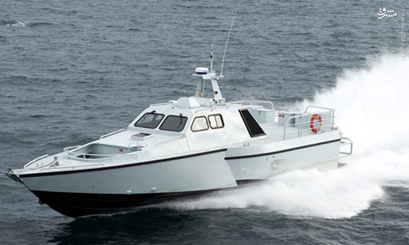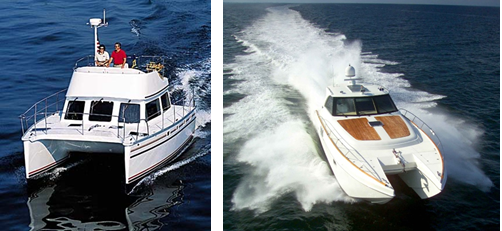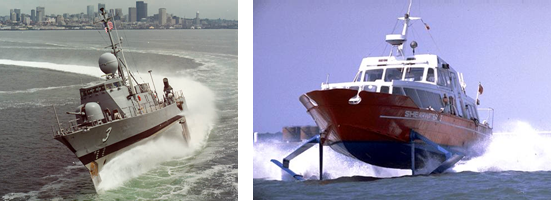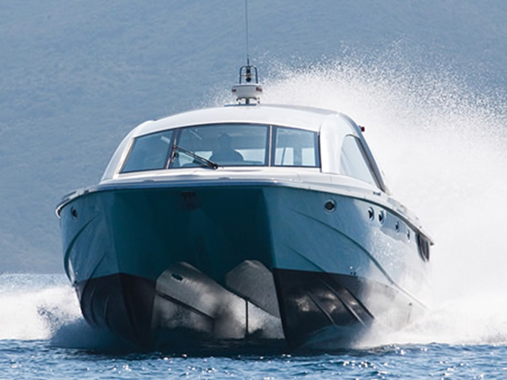High-Speed Boats
Introduction
High speed boats play an important role in the transportation and military industries, which is why the demand for high stability and high speed boats is increasing. Considering the importance of stability and achieving high speed in the high speed boats in the defined sea conditions, the methods of reducing drag and increasing maneuverability in advanced high speed boats are investigated in the high speed boat section of Sea_Based Energy Research Group. The floats examined at this center include various single-body and tunnel hull models that are examined by numerical and experimental methods.
Single-Body Boats
Single-body boat is the most commonly used hull type. This type of boat, as its name implies, is composed of a single body. Single-body boats have various forms, the high speed form of which is known as v-shaped hulls, and this form itself is divided into three different types of concave, convex, and flat. In the form below, these three forms are shown.

Various forms of V-shaped hull

Single-body boat
Tunnel Hull Boats
Multi-body boats are one of the most widely used high speed boats. These boats have always been a matter of concern for high speed boats designers and users for the sake of providing high speed and efficient seakeeping at the same time. Catamaran boat is one of a variety of multi-body boats with high transverse stability and large decks. The shape of Catamaran's hull makes the flow easily cross the body and easily pass through, but on the other hand, the wetted area in these boats is more than the typical type of single boats. The following is an example of Catamaran boat.

2-body Catamaran boat
High-Speed Hydrofoil
Hydrofoil boats are developed with a variety of applications in the form of high-speed boats, passenger and cargo transportation, and military vessels. In these boats, hydrofoils below the water surface are fitted with retaining supports underneath the main body. These hydrofoils at certain speeds, with sufficient lifting force, keep the floating body out of the water and provide conditions for boats to move relying on foils. In this way, the frictional effects are reduced and the boats will reach to higher speeds. The principles of the operation of these vessels are the same as the airplanes, with the difference that due to the higher density of water than air, its wingspan is much smaller. Hydrofoil boats are divided into two categories based on the position and shape of the hydrofoil:
1- Surface-Piercing (SP) Hydrofoil
2- Fully Submerged (FS) Hydrofoil

Hydrofoil Boat Types
Combined Boats
The desire to achieve high speed and stability in high speed boats on one hand and the demand for more freight in industries, poses the question that what types of bodies can simultaneously meet these needs. The traditional forms of high spped boats, such as single-body and multi-body, as well as modern forms such as Hydrofoil and Swatch, can not meet these needs alone. So hybrid design can be considered as one of the solutions to this problem. Combined or hybrid boats are meant to be boats that are made up of an appropriate combination of body shapes (single-body and multi-body) with a lifting agent. As an example, the Hysucat boat is the combination of two methods of using the tunnel in the body and the use of a submerged foil in the tunnel. Or in another example in Italy in 2002, an optimized boat made up of two Swatch and Hydrofoil boats. These hydrofoils tolerate about half the floating weight at high speeds. The following is a hybrid combination of Catamaran and Hydrofoil (Hysucat) shown below.

Combined Catamaran and Hydrofoil boat